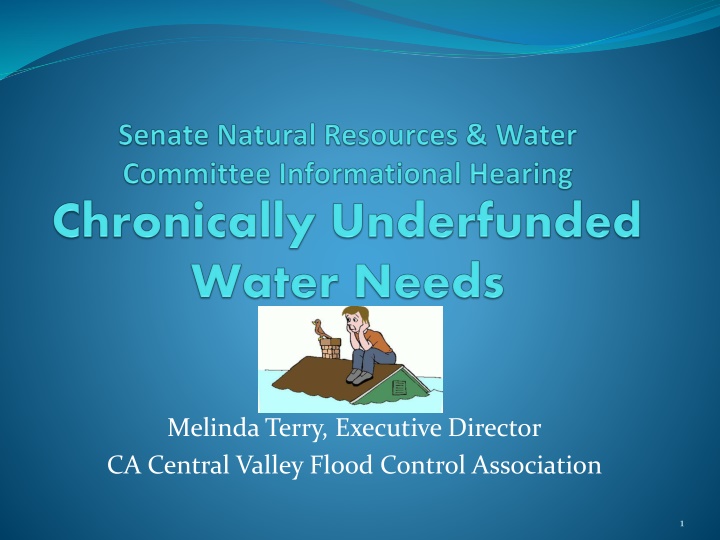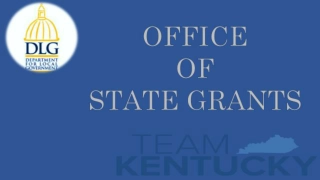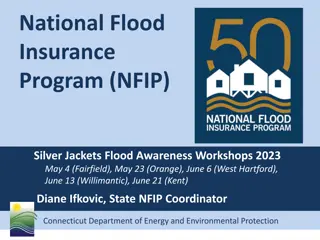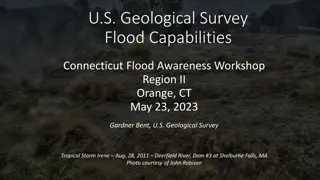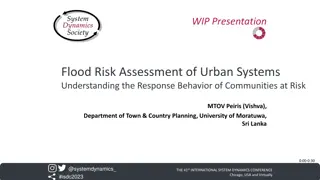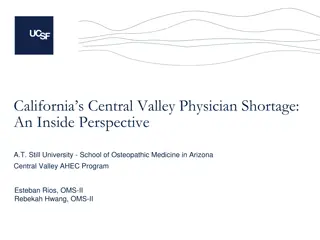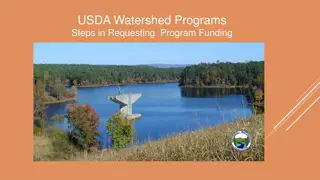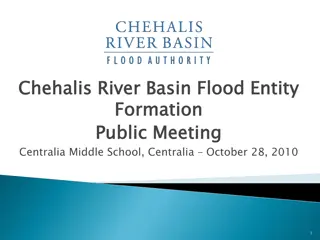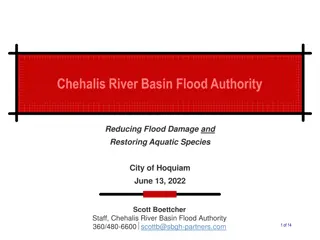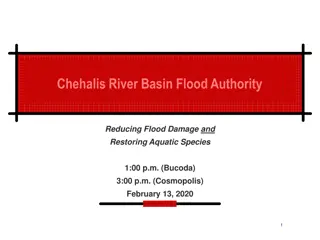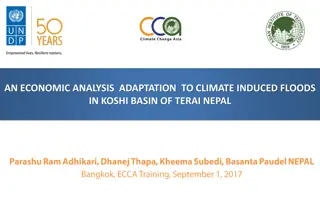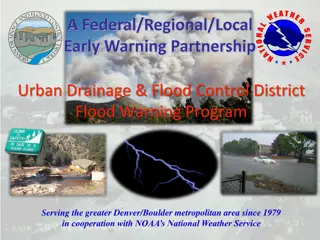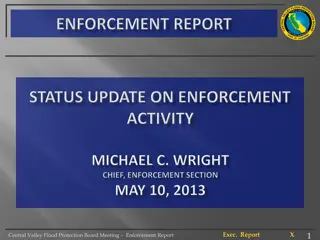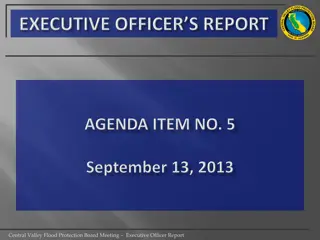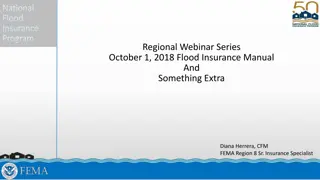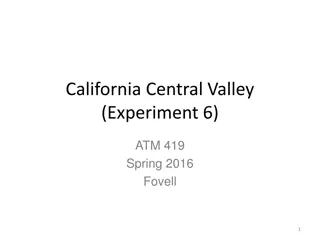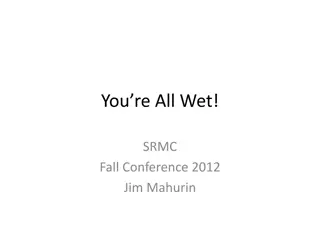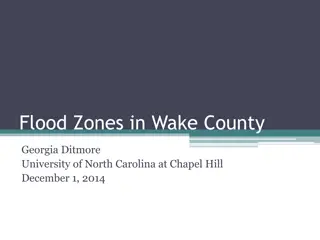Central Valley Flood Control Association - Addressing Flood Challenges in California
The Central Valley Flood Control Association (CCVFCA) works to mitigate the impact of regular floods that occur in California, causing significant damages and evacuations. With a history dating back to 1926, the CCVFCA addresses funding needs, state responsibilities, and challenges in ensuring public safety and fiscal responsibility in flood control. The association highlights the urgency of adequate funding and disaster response readiness to protect the Central Valley and its residents from devastating flood events.
Uploaded on Oct 02, 2024 | 8 Views
Download Presentation

Please find below an Image/Link to download the presentation.
The content on the website is provided AS IS for your information and personal use only. It may not be sold, licensed, or shared on other websites without obtaining consent from the author.If you encounter any issues during the download, it is possible that the publisher has removed the file from their server.
You are allowed to download the files provided on this website for personal or commercial use, subject to the condition that they are used lawfully. All files are the property of their respective owners.
The content on the website is provided AS IS for your information and personal use only. It may not be sold, licensed, or shared on other websites without obtaining consent from the author.
E N D
Presentation Transcript
Melinda Terry, Executive Director CA Central Valley Flood Control Association 1
CCVFCA CCVFCA Established in 1926 Over 70 members with flood control responsibilities Membership extends from Chico down to Tracy 2
Floods Happen Floods Happen About every 10 years (2006, 1997, 1986, 1964, 1956, 1951, etc.) Since 1950 flood disasters have been declared in every California county at least nine times. Since 1983the State s project levees (SPFC) have breached or overtopped more than 50 times. 1986 Flood City of Sacramento almost evacuated (Folsom Dam spilling more than designed), State sued for levee failure in Linda. 1997 Flood All Central Valley counties declared disaster areas; levee failures flood Olivehurst, Arboga, Wilton, Manteca, and Modesto; 120,000 people evacuated; over 9,000 homes destroyed; and over $1 billion in direct flood damages 2015 El Nino Strongest since 1997 Reducing flood risks costs less than paying for flood damage 3
State Responsibility State Responsibility Delay Can Cost State Billions 1 million people in Central Valley floodplains $70 billion in assets at risk $3 billion cumulative flood damages (1983, 1986, 1995, 1997) $464 million lawsuit payout (Paterno) $17 billion of flood risk reduction funding need identified in 2012 CVFPP $5 billion needed to achieve 200-yr urban protection 4
Funding Needs Funding Needs PUBLIC SAFETY SPFC levee and channel bypass inspection, maintenance and enforcement CVFPP/200-yr urban flood protection projects Non-project levee and statewide flood protection FISCAL RESPONSIBILITY Eligibility for USACE & FEMA disaster funding (PL 84-99) State liability for flood damage lawsuits DISASTER RESPONSE Emergency response Levee Repairs 5
Funding Challenges Funding Challenges Waning Bonds: Nearing end of Prop. 1E/84 flood protection funding, only $395 million in 2014 Prop. 1. Liability: Responsible for flood protection of 1.7 million acres covered by SPFC system (last payment for Paterno lawsuit damages from 1986 levee failure). Prop. 218: Can only assess for direct and proportional flood protection benefits (general benefits not allowed) and must compete with other voter-approved special assessments. Federal Funding: Congressional funding delays (WRRDA), flood insurance increases (FEMA/NFIP), and ineligible for USACE & FEMA disaster funding. 6
Good News Good News CVFPP Regional Planning has identified important flood control projects and is evaluating funding options CVFPB has new encroachment enforcement program Local agencies conduct levee maintenance at lower cost Delta Subventions program has been very successful Delta Protection Commission is conducting feasibility study on opportunities for beneficiary pays fees Approval of State bond funding and local assessments has resulted in significant levee work since 2006 7
Bond Funding in Action Bond Funding in Action Flood Risks Flood Protection Projects 8
Bad News Bad News Reduced state bond funding, evaporating federal funding, and local assessment challenges are practical realities. USACE recovery $$ - rescinded (over 70% SPFC facilities not eligible) Rural areas will not meet federal cost-benefit ratio Loss of FEMA recovery $$ - rescinded for Delta CVFPP Identified $17 billion in long-term funding needs, but 2006 Prop. 1E/84 coming to end and only $395 in 2014 Prop. 1 El Nino is coming . . . . 9
Funding Considerations Funding Considerations CAUTION Failed Regional Assessments - CVFPB Overlapping Fee Competition State fire prevention fee (SRA) Non-Flood Benefits General benefits such as ecosystem restoration and State interests such as SWP/CVP water supply cannot be assessed by local flood control agencies under Prop. 218 10
El Nino Effect El Nino Effect Emergency Response Levee Repairs State share for federally eligible levees and full repair cost for ineligible SPFC and Delta levees Floodfighting - Feds will cost-share, but equipment, supplies and personnel availability are critical Debris Management Dead trees from recent fires can create logjams for flood flow, damage bridges, and mudslides can close roads and water supply Post-Flood Costs Levee Damage Erosion and seepage fixes Channel Clearance Sediment and debris removal Liability Potential damage claims for SPFC levee failures 11
Recommendations Recommendations PROACTIVE STRATEGY Reduce Probability Consistent annual appropriations for routine levee and channel maintenance reduces risk of levee failures and damage liability lawsuits Protect SPFC CVFPB has new enforcement program to prevent new or remove existing illegal encroachments that threaten levee integrity El Nino Preparedness Act now to implement urgent, critical repair projects to address known weakest links: Reinforced Levees (e.g., rock waterside, construct landside berms, fix collapsing culverts/pipes within levee) Efficient Drainage (e.g., sediment and vegetation removal, new pumps) 12
